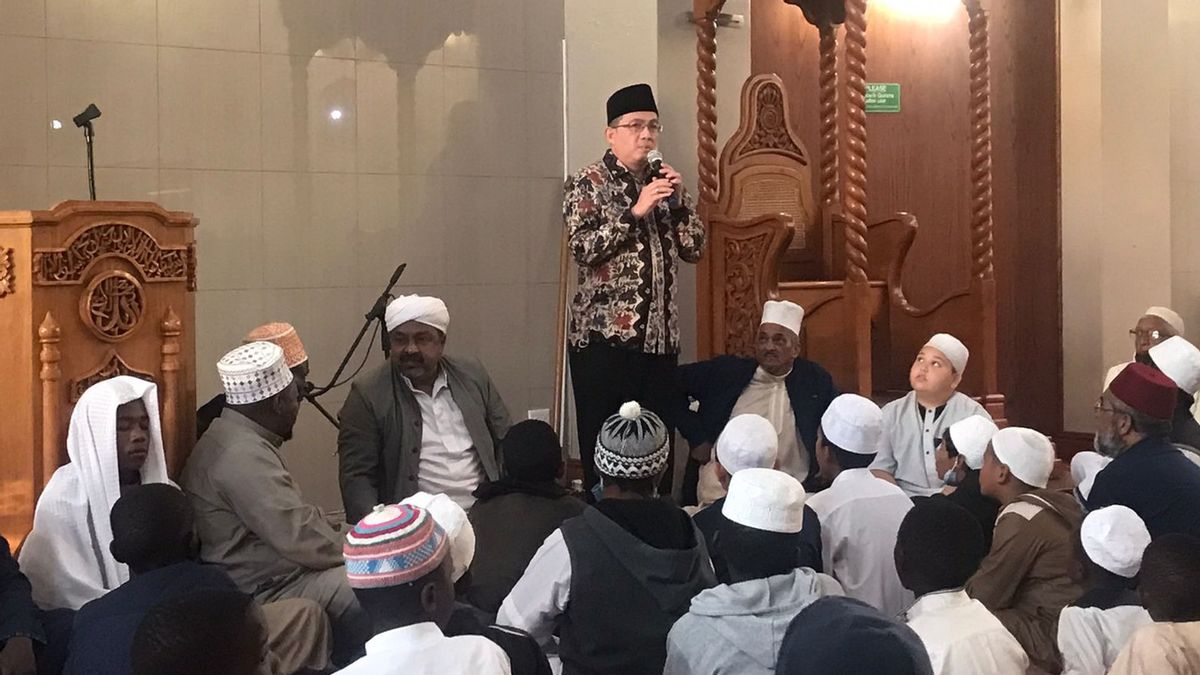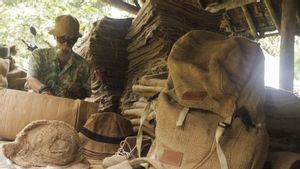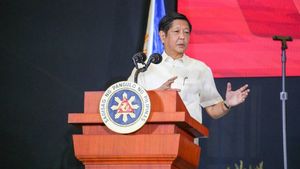JAKARTA - The resistance of Sheikh Yusuf Abul Mahasin Tajul Khalwati Al-Matasari Al-Bantani is second to none. He participated in fighting the Dutch. Even though he had to be exiled to South Africa. However, exile did not make his spirit fade.
On the sidelines of the syiar of Islam, he continues to echo resistance to colonialism on South African soil. Megawati was attracted by his heroism. He also decided to renovate the mosque around the sacred tomb of Sheikh Yusuf. Nurul Latief Mosque, his name.
The man who is familiarly called Sheikh Yusuf often travels to find religious knowledge. The cleric from Gowa has learned a lot of Islam from various countries in the world. He perpetuated visits to Syria, Turkey, Yemen, and Saudi Arabia (Makkah to Medina).
The knowledge he gets is not only about exploring religion. He also knows the understanding that leads to the deepening of Islam which rejects all forms of colonialism on earth. Pan-Islamism, his name. The similarity of understanding made him close to the Sultanate of Banten. He is familiar with Sultan Ageng Tirtayasa like a friend.
Both of them also made the Dutch and their VOC trading airlines a common enemy. He also took up arms when the Dutch pitted Sultan Ageng Tiryasa and his son Sultan Haji in 1651. Sheikh Yusuf was behind Sultan Ageng Tirtayasa.
Sheikh Yusuf brought thousands of Bugis fighters to fight the Dutch. The Dutch had difficulties, even though he and his troops finally lost. The assessment was also carried out to break the chain of resistance of Sheikh Yusuf's followers.
He was exiled to Sri Lanka, then South Africa for his resistance to stop. In fact, Sheikh Yusuf's guts in exile continued to burn. He often inflamed resistance to colonialism while spreading Islam to South Africa's land. His courage is remembered by many people. African figure Nelsonkong, one of them.
Sheikh Yusuf, who with 4,000 Bugis soldiers sided with Sultan Ageng and joined him, was also arrested by the Dutch. In September 1682 Sheikh Yusuf with his two wives, several children, 12 students, and a number of supporting women were exiled to Ceylon, now Sri Lanka. In Sri Lanka he wrote religious works in Arabic, Malay, and Bugis.
Ia aktif menyusun sebuah jaringan Islam yang luas di kalangan haji yang berhenti di Sri Lanka, di kalangan para pemakasa dan raja-rajaan di Nusantara. Haji-h▁memberikanji itu membawa karya-karya Sheikh Yusuf ke Indonesia dan karena itu, bisa dibaca di negeri kita sampai sekarang. Mengingat aktivitas Syekh Yusuf tadi, VOC Belanda khawatir dampaknya di bidang agama dan politik di Nusantara. Terasi bisa berbulk berus. VOC lalu mengambil keputusan memindahkan Sheikh Yusuf Kaapstad di Afrika Selatan, ungkap Rosihan Anwar dalam buku Sejarah kecil Petite Histoire Indonesia Volume dua(2008).
Many national figures are also attracted by the proof of Sheikh Yusuf. Suharto and Megawati are the main ones. Suharto even pinned the title of national hero to Sheikh Yusuf in 1995. Megawati is different again.
He had admired Sheikh Yusuf long ago. This admiration peaked when he visited the tomb of Sheikh Yusuf in Makassar Village, Cape Town, South Africa. On the sidelines of his 2002 visit, Megawati witnessed a semi-permanent mosque that was undermaintained. Nurul Latief Mosque, his name.
The mosque has been present since the 1940s as an inseparable part of the tomb of Sheikh Yusuf. The original building was only made of wood, then renovated to a semi-permanent one. Megawati's desire to rebuild the Nurul Latief Mosque peaked.
Megawati's attitude is similar to that of her father, Bung Karno, who is concerned about the Leningrad Mosque (St. Petersburg Mosque) which was not maintained as a warehouse in the Soviet Union. Soekarno then asked his friend, a high-ranking Soviet Union officer, Nikita Khrushchev, to restore the function and renovate the mosque.
Megawati also took a stand. He chose to renovate the Nurul Latief Mosque. He felt that the tomb of Sheikh Yusuf was a representative of Islam and Indonesia. The mosque around the tomb of Sheikh Yusuf must be magnificent. Even for the sake of increasing the quality of local Muslims.
The funds used are from the mutual cooperation of the Indonesian people. The results were satisfactory. The mosque became magnificent. In fact, it can accommodate up to 1,500 more worshipers. In fact, previously the Nurul Latief Mosque only accommodated 200 people. Moreover, some of the mosque's ornaments were imported from Indonesia directly. The renovation of Nurul Latief Mosque was completed when Megawati was no longer the President of Indonesia. Vice President Jusuf Kalla, who took action to inaugurate the Nurul Latief Mosque on September 28, 2005.
Many of the heritages and role models left by Sheikh Yusuf. President Suharto in 1995 to three hundred years after the death of this great scholar - granted the title of hero to Sheikh Yusuf, And in 1997 President Soeharto visited the tomb of Sheikh Yusuf which is located in the Makassar area, Cape Town, the tomb known as 'Jekh Yusuf's character' cannot be anything else, becoming the most popular pilgrimage among the Muslim people of South Africa.
The Indonesian government's concern for the Muslim people of South Africa from Indonesia, who are now the eighth generation, continues. Through the Indonesian Ambassador in Pretoria, Abdul Nasier, the Indonesian government during the time President Megawati Soekarnoputri funded the renovation and expansion of the Nurul Latief Mosque which is located not far from the tomb of Sheikh Yusuf. Today's Indonesian Muslims may be grateful and proud, that their country's children - such as Sheikh Yusuf and many more in the history of Islam in South Africa - have played a major role in raising the sentence ofullah in a distant rantau," said Muslim scholar Azyumardi Azra in the book Traces of the Muslim Network (2007).
The English, Chinese, Japanese, Arabic, and French versions are automatically generated by the AI. So there may still be inaccuracies in translating, please always see Indonesian as our main language. (system supported by DigitalSiber.id)









